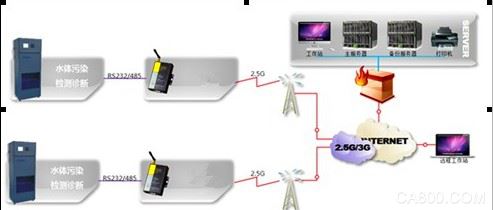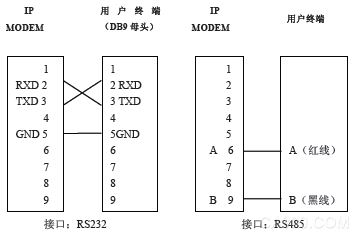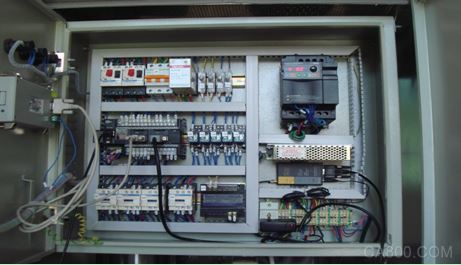Application Program of Sewage Pollution Source Automatic Monitoring System I. Project Background With the rapid development of the economy, the volume of sewage discharged in our country has significantly increased, leading to serious pollution of surface water and a decline in environmental quality. However, the current monitoring of water quality at pollution sources and drainage channels is still largely dependent on manual methods. These traditional approaches suffer from low time coverage and lack of scientific and representative sampling, making it difficult to accurately reflect the continuous changes in wastewater discharge from enterprises and municipalities. In response to this challenge, both national and local governments have placed increasing emphasis on ecological protection and have strengthened control over water pollution. Despite these efforts, some entities still engage in illegal discharges due to weak environmental awareness and economic incentives, causing severe environmental damage. Such incidents continue to occur, highlighting the urgent need for improved monitoring systems and more effective solutions to ensure real-time data collection and enhance overall water quality monitoring capabilities. In many sewage treatment monitoring projects, the required wastewater monitoring systems often face challenges such as difficult terrain, extreme weather conditions, and large monitoring areas. Traditional wired communication and wireless data transmission methods may not be suitable, and existing equipment can be costly, inflexible, and hard to maintain. China Mobile's GPRS network, with its wide coverage, high-speed data transfer, and always-on connectivity, offers an excellent cost-performance ratio. This makes it an ideal choice for implementing advanced sewage monitoring systems that are efficient and reliable. II. Project Analysis 2.1 System Composition 2.1.1 Sewage Data Collection Terminals: These terminals are categorized based on the type of monitoring, including surface water stations (rivers, reservoirs), urban sewage treatment plants, and industrial pollution sources. Key parameters monitored include flow rate, pH, COD, ammonia nitrogen, nitrate, total phosphorus, and others. Real-time noise data is also collected and transmitted via the MODBUS standard protocol. 2.1.2 Wireless Transmission Equipment: The CM550-5XX IP MODEM (DTU) is used for its compact size, low power consumption, and ease of configuration. It supports multiple data channels, real-time online functionality, and APN network access, ensuring secure and reliable data transmission while offering cost-effective communication options. 2.1.3 Data Management Center: The system includes several key components: the data receiving subsystem for real-time monitoring and data reception; the data analysis and statistics subsystem for user interaction and reporting; the alarm SMS subsystem for instant notifications; and the WEB release subsystem for public access to water quality information. 2.2 Overall System Structure: The data acquisition terminal connects to the CM550-5XX via RS232/485 interfaces. The data center can connect through various methods like fixed IP, APN, or ADSL. The GPRS network enables a transparent data channel between the remote server and the terminal, supporting bidirectional data transmission. 2.3 System Implementation Features 2.3.1 Data Receiving Subsystem: This subsystem automatically starts after power loss or restart, filters incoming data for security, stores it in the backend database, and allows remote reconfiguration of field devices. It also checks the status of all monitoring stations. 2.3.2 Data Analysis and Statistics Subsystem: This is the core part of the system, allowing staff to interact directly through a C/S model. It provides real-time data queries, historical data management, GIS mapping, anomaly detection, and report generation, among other features. 2.3.3 Alarm Message Subsystem: Using mobile communication technology, the system sends SMS alerts when thresholds are exceeded. It supports flexible configuration of phone numbers and real-time monitoring of alarms, ensuring timely responses. 2.3.4 WEB Publication Subsystem: This subsystem provides public access to water pollution reports, test data, and monitoring site details, promoting transparency and public awareness. III. Project Architecture Implementation 3.1 Transmission Module and Sewage Treatment Collection Terminals: The CM550-5XX supports 232/485 communication, enabling direct connection to data collection terminals. This setup simplifies data transmission in industrial environments. 3.2 Data Center Network Access: Options include dedicated lines using APN, ADSL dial-up with dynamic IPs, and fixed IP connections. Each method offers different levels of security, stability, and cost-effectiveness depending on the project scale. 3.3 Data Center Software Platform: The system supports various software configurations, including pre-integrated drivers, virtual serial port tools, and custom development libraries, providing flexibility for users to build their own monitoring platforms. IV. Program Features 1. The use of wireless IP MODEMs reduces cabling and enables multi-point-to-center networking for centralized data management. 2. High-performance processors and automatic recovery mechanisms ensure continuous operation and stable communication links. 3. The system supports scalable expansion, allowing new monitoring points to be added without disrupting existing networks. 4. Standardized serial communication and plug-and-play design simplify installation and maintenance. 5. The use of TCP/IP protocols ensures secure and accurate data transmission. 6. Multi-center design enhances system reliability by preventing single points of failure. 7. Remote configuration capabilities reduce the need for on-site visits, saving time and labor. 8. Optional materials allow operation in extreme temperatures and humidity conditions. V. Summary The monitoring of sewage data is now widely adopted and plays a critical role in protecting the ecological environment. With strong national support, Shenzhen Yunlian Wulian Technology has successfully implemented its solutions across the country. In the era of the Internet of Things, cloud-connected technologies are being applied in numerous industries, including finance, logistics, smart cities, and environmental protection. These innovations are shaping the future of sustainable development and environmental safety. wires Headset, Wireless Headset, Headset Wired Headset,Wireless Headset,Smart Wired Headset,Smart Wireless Headset NINGBO SANCO ELECTRONICS CO., LTD. , https://www.sancobuzzer.com

